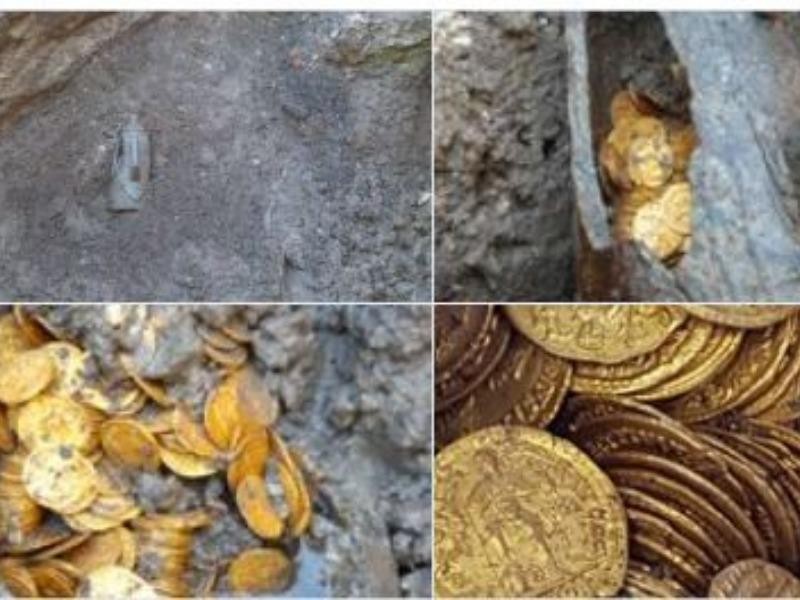22,000 Roman Coins Unearthed—A Treasure Buried 1,500 Years Ago

Few discoveries capture the imagination like a buried treasure, and the unearthing of more than 22,000 Roman coins has stunned archaeologists and historians alike. Found by a metal detectorist and carefully excavated by experts, this vast hoard—hidden for over 1,500 years—offers an extraordinary glimpse into the final chapters of the Roman Empire. Each coin, stamped with the likeness of emperors and adorned with symbols of authority, tells part of the fading story of an empire once considered eternal.

The coins date to a turbulent era marked by political upheaval, invasions, and economic instability. By the 4th and 5th centuries AD, Rome was no longer the unchallenged superpower it had been. Emperors rose and fell with alarming speed, borders collapsed under barbarian incursions, and the very heart of the empire trembled. In this context, burying such a vast fortune makes sense—whether as a safeguard from invading armies or the hidden savings of a wealthy Roman who never returned to claim them.
The sheer scale of the find is breathtaking. With over 22,000 coins, it represents not just wealth but also information. Each piece serves as a miniature time capsule, carrying portraits of emperors, inscriptions, and propaganda that reveal shifting power dynamics. Coins from emperors such as Constantine the Great or his successors may appear alongside later rulers, illustrating the transitions of authority during Rome’s decline. Together, the hoard forms a chronological archive of politics, religion, and identity during one of history’s most transformative periods.
![]()
Archaeologists emphasize that the discovery is more than just treasure—it is a window into everyday life. Coins were the lifeblood of commerce, used by soldiers, traders, and farmers alike. The denominations, mint marks, and circulation patterns provide crucial clues about trade routes, taxation, and the reach of Roman influence even in its waning centuries. In essence, the hoard is both a fortune and a record of economic history.
But the mystery lingers: who buried the treasure, and why did they never reclaim it? Was it a Roman official hiding state funds as invasions swept through the provinces? A wealthy merchant protecting his savings during times of unrest? Or perhaps a temple treasury concealed during the collapse of pagan traditions in the face of Christian dominance? Each theory deepens the allure of the discovery, adding human drama to archaeological fact.

For the modern world, the hoard stands as a testament to the enduring legacy of Rome. Though the empire itself crumbled, its currency, language, and cultural imprint persisted, shaping Europe and beyond. These coins, sleeping beneath the soil for centuries, now shine once more as storytellers of a world that struggled, adapted, and transformed.
The 22,000 Roman coins remind us that history is never fully lost—it waits patiently to be uncovered. With every coin examined, a piece of the puzzle of Rome’s twilight era comes into focus, bridging the gap between past and present.
#RomanTreasure #AncientHistory #ArchaeologicalDiscovery #LostAndFound #RomanEmpire











